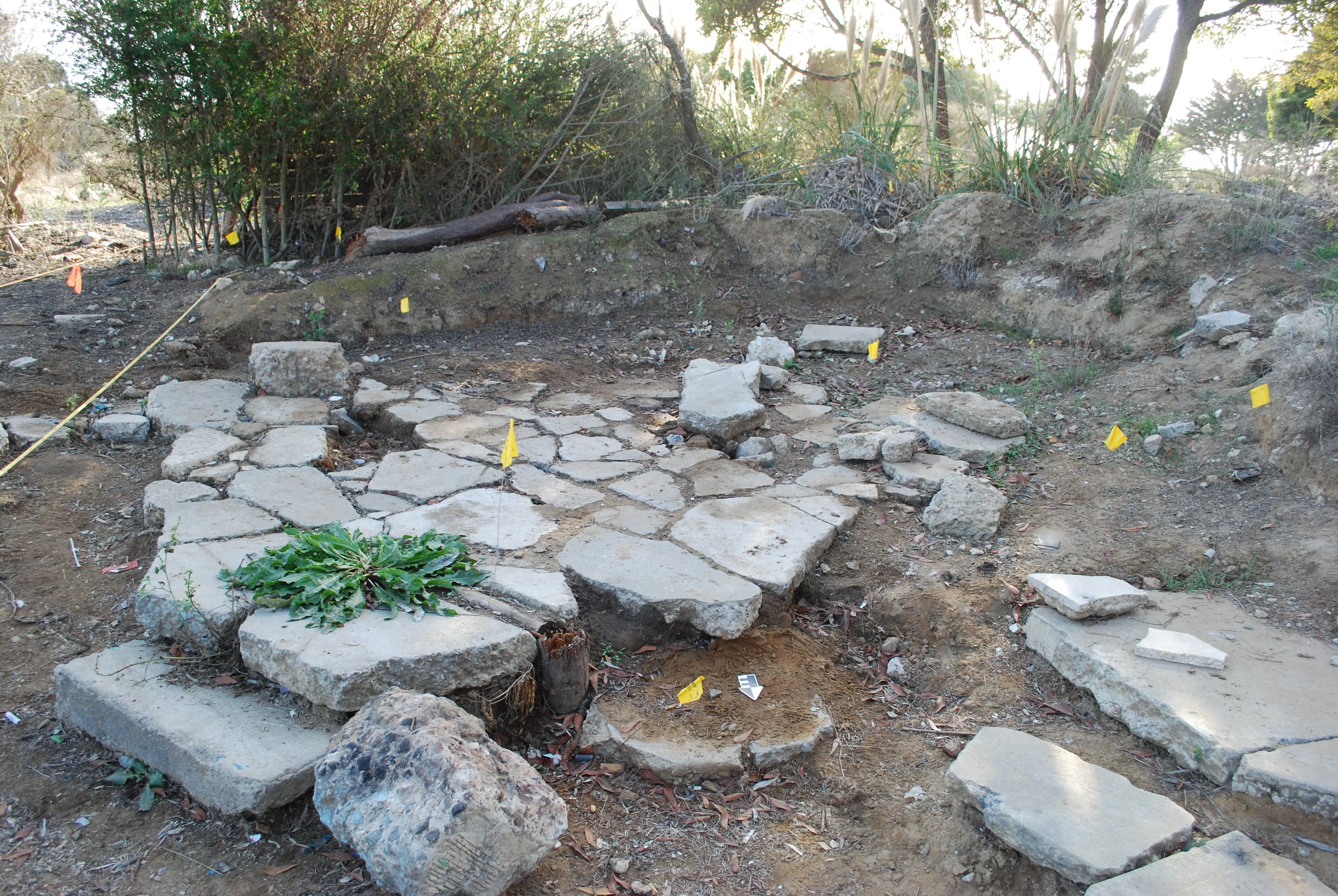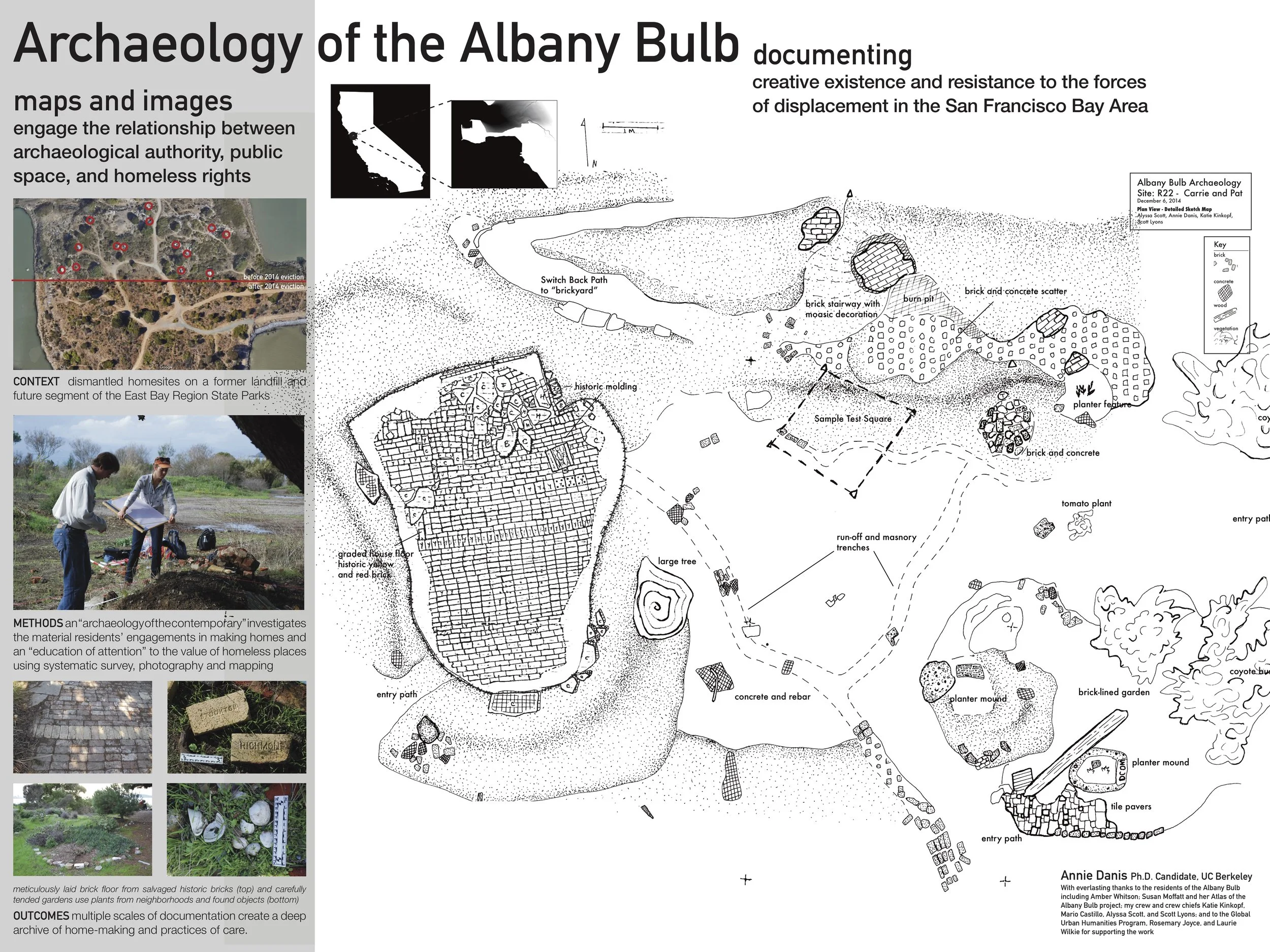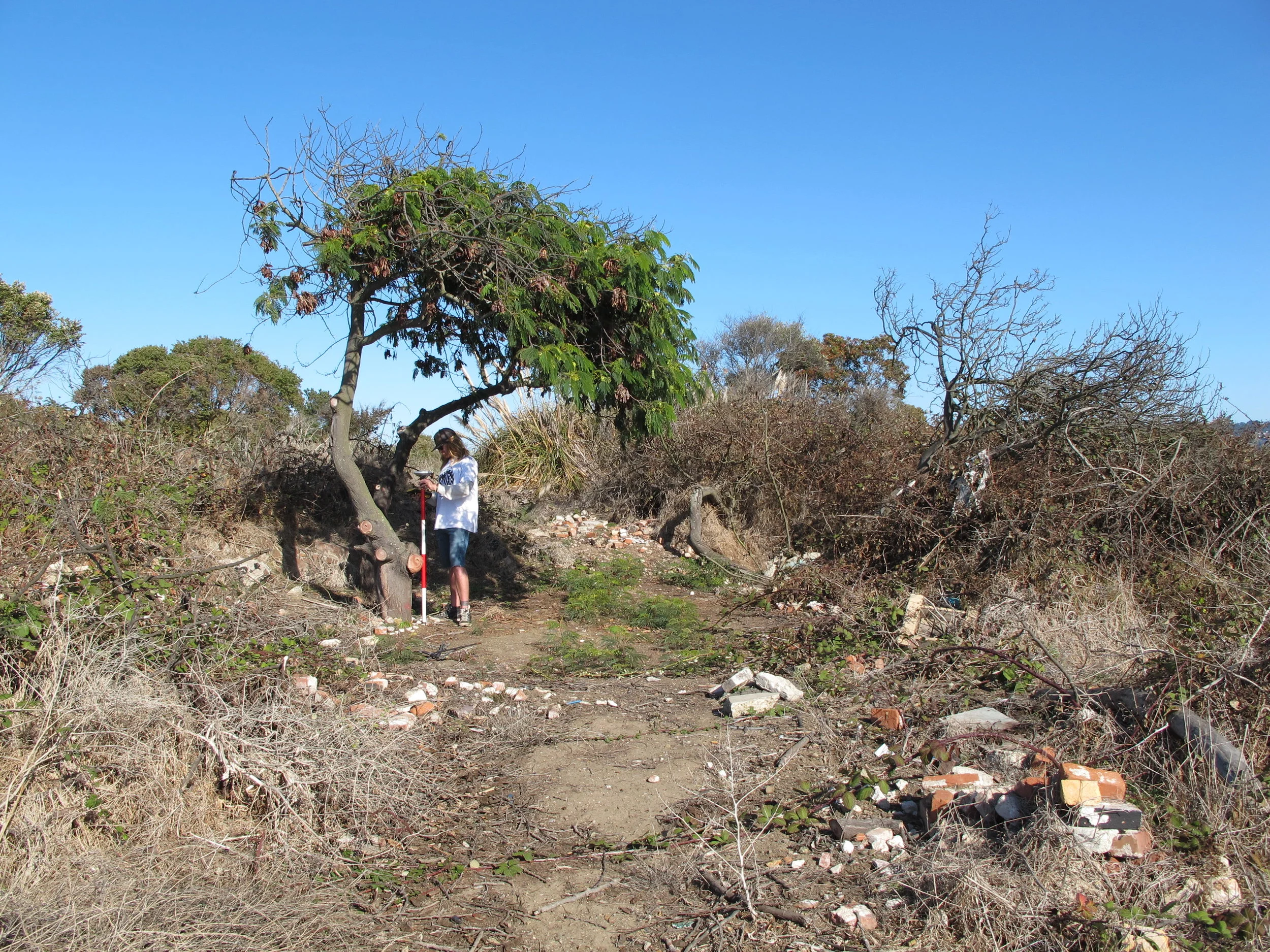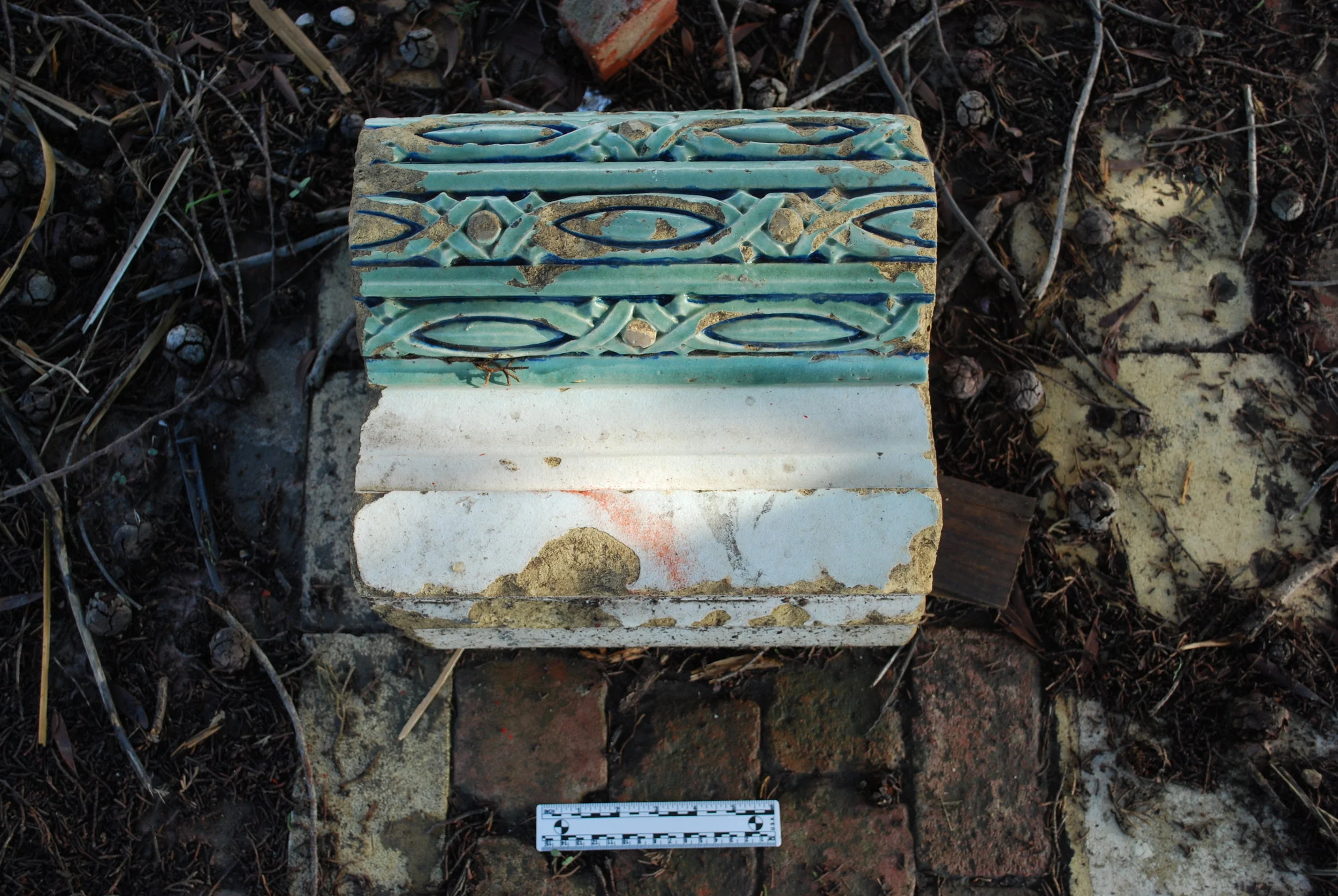
Albany Bulb Archaeology

An Archaeology of the Albany Bulb used the detailed attention of archaeological record to document recently dismantled homes on the Albany Bulb, a former landfill. When the landfill was decommissioned in the 1980s, the site became public open space. People quickly discovered the joy of the Bulb’s views and the richness of its bedrock--a rich substrate of the materials of past homes and buildings: rebar, brick, concrete, stone. Albany Bulb has been a site of creative existence and resistance to the forces of displacement in the San Francisco Bay Area ever since. Shortly after the 2014 eviction, a team of undergraduate volunteers and I consulted with former residents to document the traces of their history in the unique landscape of the Bulb. We made maps and images that engaged the relationship between archaeological authority, public space, and the right to be remembered in the context of homeless disenfranchisement. By using the exacting detail of archaeological recording, our visual representations of “landfill-ian” homes challenge the stereotypes and institutional devaluation of people living outside. Our archaeology of the Albany Bulb is an archaeology of homelessness by social convention only. The materiality of the spaces the residents constructed to capitalize on the unregulated nature of the space and its bedrock of construction materials clearly demonstrate the habitual actions, the “pattern of regular doings,” that indicate dwelling at home.
Watch a lecture on the project from 2017 HERE





